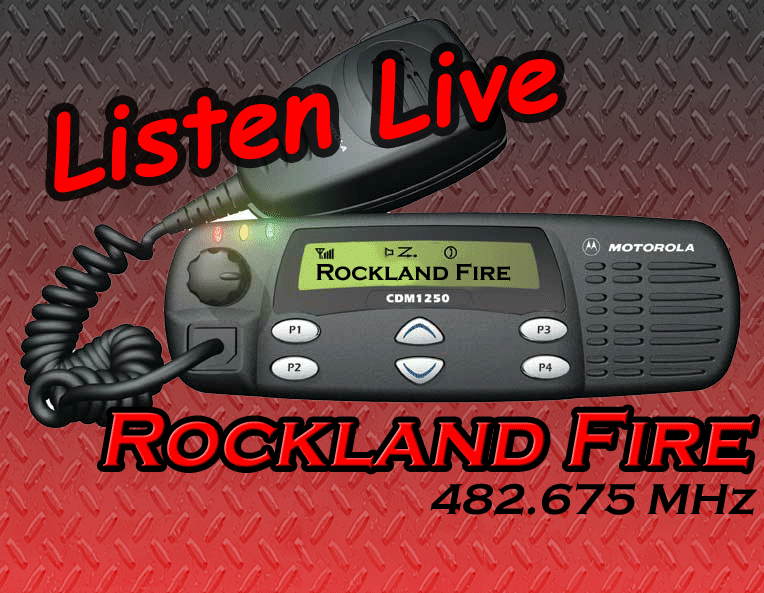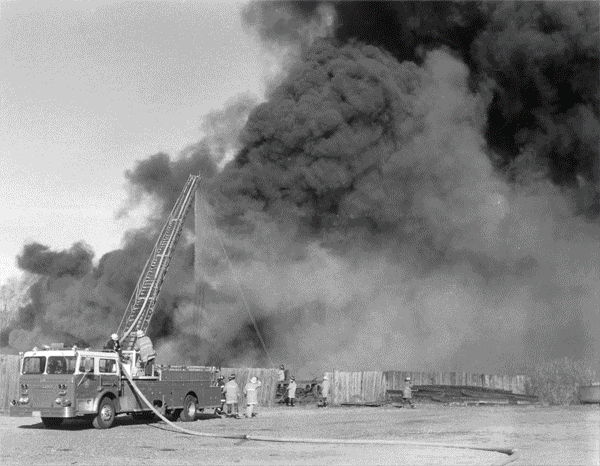|
Q. Why does the Fire Horn Sound? Q. How often is the station empty and how long is it empty? Q. I want to listen to your fire radio. What is your frequency? Q. Why does the fire engine go with the ambulance on a medical call? Q. What is the difference between an EMT and Paramedic? Q. What is (ALS) Advanced Life Support and how can this help me? Q. When I call for an ambulance, why do I sometimes see an ambulance from another town? Q. Do the personnel on the ambulance fight fires also? Q. Why do so many fire trucks go on a call? Q. Why does the emergency equipment run with lights and siren, then just turn them off? Q. Why do some fire trucks park down the street from a fire? Q. When you're not out fighting fires, what do you do? Q. Why do I see a fire truck parked at the grocery store? Q. How hot does a house fire get? Q. Does the Fire Department rescue cats from trees? Q. Why does the Fire Horn Sound? A. The Fire Horn is one method of alerting firefighters that there is a fire, significant emergency, or that our on duty resources are unavailable to respond to another emergency. In some cases the horn sounding means that the Fire Station is empty. This is because there are multiple calls happening at the same time and all of our resources are trying to handle them but need more help. The station being empty means that there is no one there to answer the phone (911 or other emergency phone call), no one to answer the fire radio (if a firefighter radios in for help or additional resources) and especially that no one is there to respond to another emergency. Q. How often is the station empty and how long is it empty? A. The fire station is empty approximately 100 times per year. The time that the station is empty varies by the type and number of emergencies happening at any given time. A conservative estimate of the total amount of time per year is approximately 17 hrs. Q. I want to listen to your fire radio. What is your frequency? A. Our radio frequency is 482.675 MHz. Q. Why does the fire engine go with the ambulance on a medical call? A. The Rockland Fire Department sends a fire engine and the ambulance to medical emergencies to ensure that the public gets the fastest, most effective and appropriate response. The engine crew is there to assist the ambulance crew with carrying the ALS medical equipment, help in moving the patient from the house and if necessary provide extra help in the ambulance on the way to the hospital. We plan for the worst and hope for the best when responding to a call. Q. What is the difference between an EMT and Paramedic? A. The difference between an Emergency Medical Technician (EMT) and a Paramedic is a significant amount of education. A Paramedic goes through more education and training and can provide a higher level of emergency care including invasive procedures (ALS or Advanced Life Support procedures). A Paramedic is an EMT. There are different levels of EMT training: EMT-Basic, EMT-Intermediate, EMT-Paramedic. Each level requires more training and education than the prior. A Paramedic will have upwards of 1500 hours of additional medical training over an EMT-Basic. Q. What is (ALS) Advanced Life Support and how can this help me? A. Our Ambulance is primarily staffed with Firefighter/Paramedics. This staffing enables us to take the Emergency Room right to the patient. Studies have found that the first ten minutes of an emergency are the most critical. Our Firefighter/Paramedics are trained not only in (BLS) Basic Life Support, but are trained in establishing I.V.s' and administering numerous life saving medications in the field. They can use comprehensive cardiac monitoring including 12 lead, pediatric advanced life support and advanced airway management. Q. Why does the ambulance sit in front of my house after they get the patient into the back of the ambulance? A. In many ways, an ambulance is like a mobile emergency room. The ambulance carries the same equipment as the emergency room has - and even does the same procedures as the emergency room. Sometimes, a patient needs some medication or a special procedure prior to going to the hospital. Some medical conditions need to be addressed rapidly to ensure a positive outcome for the patient. Q. When I call for an ambulance, why do I sometimes see an ambulance from another town? A. During the course of a day it is not unusual for two, three or four calls for the ambulance to come in at the same time. If our ambulance is busy we will request an ambulance from the next available town. This Mutual Aid system works both ways, therefore the Q. Do the personnel on the ambulance fight fires also? A. The personnel on the ambulance are also firefighters. All personnel are cross trained and can fight fires and respond to medical calls. Q. Why do so many fire trucks go on a call? A. The number of trucks responding is based on the type of call received. The most common type of call is those involving buildings. The standard response for any structure (building) is two engines and a ladder truck. Structural calls can include alarms, fires, odors of gas or smoke, and lightning strikes. Other calls may require additional resources or manpower. Q. When an emergency vehicle is approaching that is displaying emergency lights and sirens, what should I do? A. State law, and common sense, dictate that vehicles yield to emergency vehicles that are operating their emergency lights and siren. Emergency vehicle drivers are taught to pass on the left whenever possible when responding in an emergency mode. When safe, slow down, pull over to the right, and stop. However, there are circumstances where that may not be possible (if you car is already stopped, and you don't have anywhere to pull over). Simply stay put until the emergency vehicle goes around you. If you are blocking the route of the emergency vehicle, and you are able to pull ahead and over into a clear area, use your turn signal to indicate your intentions, and proceed at a safe speed. Never slam on the brakes and stop in the middle of the road when you see apparatus approaching. Make no sudden moves. If an emergency vehicle is approaching from the opposite direction, you should pull over and stop. You have no idea if they are proceeding down the road, or are planning on turning into a driveway or intersection right in front of you. You are not required to slow down or pull over for emergency vehicles that are responding in the opposite direction on a divided highway. Q. Why does the emergency equipment run with lights and siren, then just turn them off? A. On occasion, the fire engine and ambulance will be driving with lights and sirens and then suddenly turn them off--perhaps only to turn into a shopping center parking lot or side street. Be assured that when this happens it means we have received information that the caller or incident is no longer a dire emergency. It is what we call "being cancelled". Any or all of the apparatus may continue to drive to the call or perhaps some will return to the Fire Station, but we do not do it just to get to the store faster. "We promise"! Q. Why do some fire trucks park down the street from a fire? A. Citizens may see fire apparatus parked down the street from an incident for two primary reasons: a. In situations when an Q. When you're not out fighting fires, what do you do? A. Firefighters work a 24-hour shift. We eat, sleep and work out of our fire station. It is our home which is why we refer to it as a fire “house”. All daily maintenance on fire department vehicles is performed at the fire station. We are involved in educational programs in the schools and to the public. We conduct training to help maintain and improve our skills. Q. Why do I see a fire truck parked at the grocery store? A. Our firefighters work 24 hour shifts, which means that they eat, sleep, and work at the fire station for 24 hours at a time. Occasionally they need to go to the store to purchase food to prepare meals for the day, but they are still on duty. They do not have the freedom to go anywhere they want for breakfast, lunch or dinner. They are in service and prepared to respond immediately, even from the grocery store, if they get a call. If you pay close attention, you'll notice that they are carrying emergency radios. Sometimes they get a call and have to leave their items as they quickly respond to the emergency. Q. How hot does a house fire get? A. The temperature of a house fire depends on the materials that are burning. Now more than ever, our society's modern conveniences are made of synthetics instead of Mother Nature’s raw materials. When plastics or other petroleum based products burn, temperatures can reach as high as 1,200°F.
Q. Does the Fire Department rescue cats from trees? A. No. The Fire Department does not respond to these requests. The Rockland Fire Department exists to assist the public in the protection of life and property by minimizing the impact of fire, medical emergencies, and potential disasters. We understand that pets are very important to you. However, to ensure timely response to the types of emergencies listed above, we typically refer stranded animal requests to Animal Control.
Page Last Updated: Dec 23, 2008 (20:23:05)
|
|



















